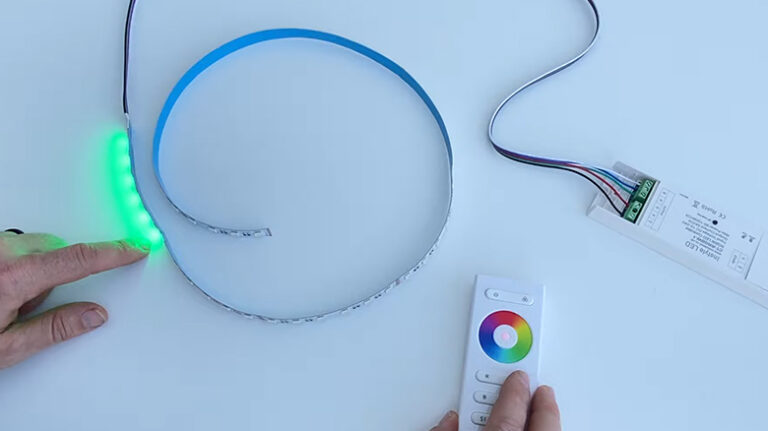How to Dim Fish Tank Light? Need to Know the Importance
Bright lighting has the potential to stress aquarium dwellers. Dimming the lights is occasionally required to provide them with a naturalistic habitat and an ideal environment to thrive in. Then, how do you adjust aquarium lights?
Tank illumination may be dimmed by using a dimmer switch. Replace the toggle switch with a dimmer switch to adjust the aquarium lighting’s brightness. But first, ensure the lights are compatible with the intensity-controlling dimmer switch. Now let’s examine the many techniques for dimerizing aquarium lights.

Reasons to Dim Aquarium Lights – Described Thoroughly
The health of the fish and tank depends on the aquarium lighting. The tank’s residents can interact, perceive their surroundings, and find food thanks to the lights. However, the occupants of the aquarium may suffer from constant exposure to lighting. Your aquatic pets may experience difficult circumstances and life cycle disruption. Some basic explanations for why dimming aquarium lights is important are listed below.
Prevent Algae Growth
The primary cause of algae formation is light. Algae may grow thicker and more quickly when the water is warmed by light. Phytoplankton will therefore be deprived of the light energy necessary for rapid growth if aquarium lights are dimmed.
Recreate Natural Habitat
In nature, fish or other aquatic animals are not constantly exposed to light. To simulate their native habitat, you need to dim the tank lights.
This enables your aquatic creatures to mimic the cycle of day and night in the wild. Additionally, it aids in their adaptation to variations in humidity and temperature.
Getting Some Sleep
You may give your aquatic animals a break by turning down the lights. They live longer as a result and remain healthy. Additionally, low lighting encourages nocturnal fish to hide throughout the day so they can emerge at night. These fish has light-sensitive eyes. They continue to hide in places to escape light and other fish that are predators.
The circadian cycle
Trying to imitate the normal circadian cycle of the fish in the tank is essential when reducing aquarium lighting. The aquatic animals will become anxious, lose hunger, hide from each other, fight with fellow aquarium mates, etc, if there is no darkness. Both ill health and death may result from this.
Grow plants more quickly
Light is required for plant photosynthesis. By turning off tank lights at night, you may give plants the day-night-night cycle they need by interrupting photosynthesis.
Many tank plants require roughly 12 hours of light daily. for optimum development Since plants also require darkness for breathing, contact with tank lights might harm them.
Prevent Tank Water from Heating
By dimming the tank lights, you may prevent the water from boiling at night. To prevent the water from becoming too hot, most aquarists leave their tank lights on for eight and ten hours each day.
How to Dim Fish Tank Light – Tips for Dimming the Lights
With a dimmer switch, you may dim LED tank lights. The LED lights’ dimmer switch has a remote that you may use to cover the lighting and mix different colors. An app may also control some of the more recent LED light types.
Some LED aquarium light types let you add more lights or swap them out. Additionally, you may add various colored lights and control them using a straightforward remote. With these new versions, you may choose to keep the brightness settings where they are dependent on your tank’s needs. You’ll be able to easily reduce their brightness to promote relaxation and reduce tension in your aquatic creatures.
In a plant tank, plants and fish require a minimum of 8 to 12 light hours per day, and in a non-planted fish tank, 6 to 8 hours.
By lowering the aquarium lights appropriately, you may recreate circumstances similar to their natural habitat. By doing this, you can be sure that the animals in your aquarium are happy and healthy. You might harm the health of your tank by leaving the lights on for extended periods or by not adding additional illumination. It can be deadly and will put fish and plants under stress.
Diverse Techniques for Dimming Aquarium Lights
The aquarium residents may experience difficulties if the lights are left on all the time. As a result, it’s crucial to comprehend the tank residents’ illumination needs and adjust the light intensity accordingly.
The two major methods for dimming aquarium lights are listed below.
Dimmers
Dimmers are gadgets that change the power to regulate the quantity of light in a space. The tank’s lighting will become less bright when you use a dimmer. You can use adjust the brightness of various lights, including resistor halogen, incandescent, CFLs, and LEDs. The many types of conventional dimmers used to regulate luminance are listed below:
- Single-Pole,
- Plug-In Dimmers,
- Multi-Way Dimmers, and
- Smart Dimmers
Timers for lights
Light switch-timers regulate the amount of light in a specific area, as opposed to dimmers, which control light intensity. These are often handled manually or remotely and used to conserve electricity. Additionally, you may set the light-switch timers to your specifications so that the tank lights are turned on and off as needed.
How Often Should the Tank Lights Be Dimmed?
The key elements that affect how long you should dim your tank lights are listed below.
Fish Species
Each variety of fish has certain illumination needs. For instance, tropical fish require more powerful lighting than marine fish.
Fish native to streams, reservoirs, and clear waterways require 10 to 12 hours of strong light every day to survive. On the other hand, cold-water fish need lower lighting for roughly eight hours each day.
Aquarium Plants Aquarium plants need a healthy diet, enough light, and a comfortable temperature to grow.
Most tropical plants require high-intensity light that is exposed for 12 hours. However, aquatic moss may endure in dim daylight, including Javanese Moss and Anubias Nana.
Invertebrates
Compared to tropical fish, most invertebrates such as prawns, snails, and crawfish require less light. Therefore, you must be sure to turn down the lights every ten to twelve hours if you wish to add them to your tank.
To provide the invertebrates places to hide so they can protect themself when the lighting is on; you also need to add décor and plants.
Natural Ambient Light
When setting up the aquarium’s lighting cycles, you might wish to consider natural lighting.
It’s not ideal to place a water tank close to windows that receive sunlight to keep the water temperatures. Nevertheless, setting it in a well-lit area can reduce artificial exposure to light and make it easier to use lower lighting.
Frequently Asked Questions
How Do I Reduce The Light Intensity In My Aquarium?
Poor plant development and algae are nearly inevitable outcomes of too much light alone without necessary fertilizer and CO2 input! Raising your lights upward above the water’s surface is a quick and easy approach to lessen its intensity. If this isn’t possible, you might perhaps cover or unplug one of your lamps.
Can A Fish Tank Light Be Too Bright?
For a typical aquarium, the light should not be excessively intense because it may stress your fish. Algae development can also be caused by very bright illumination.
How Do I Dim My Fluorescent Aquarium Lights?
Tank lights may be dimmed in a variety of ways. The bulbs in the fixture can be taken out and swapped out with smaller, lower-wattage bulbs as one solution. A timer or switch can also be used to turn the lights off at specific periods during the day.
Conclusion
Your fish’s surroundings will be more brilliant and vibrant if you add lighting to the tank. The additional dimming of the light will benefit them and the plants, who will produce the food and other minerals for your fish as a result of the light’s promotion of plant development. You may greatly influence your fish’s general health and happiness by adding a few low-tech lights to your aquarium!






